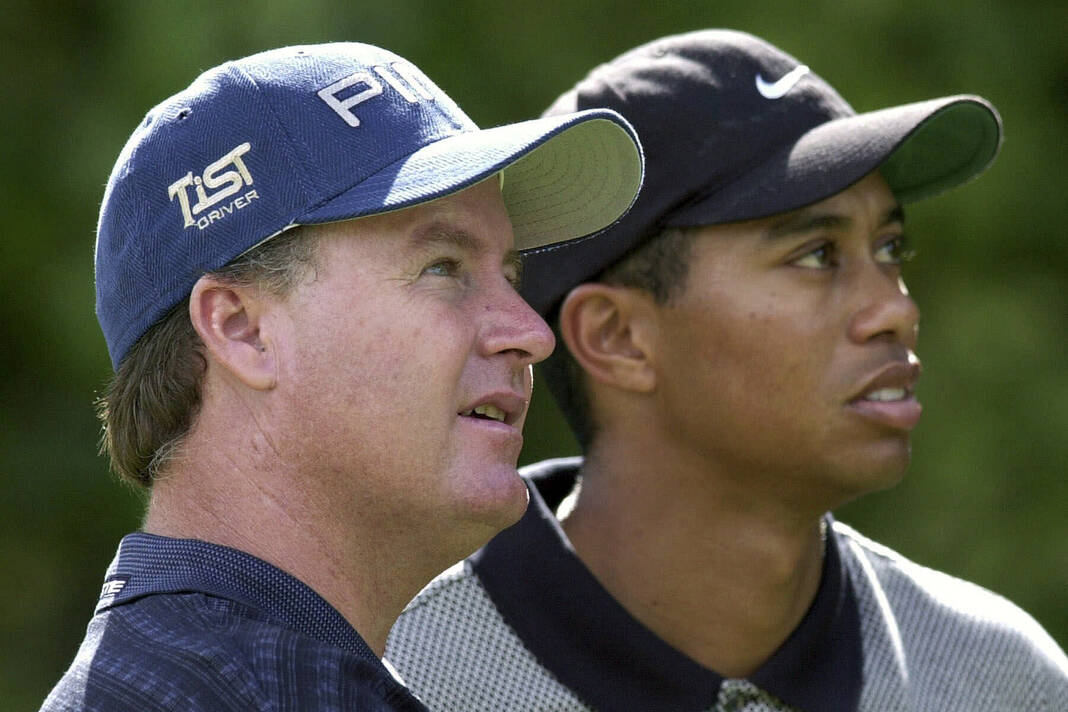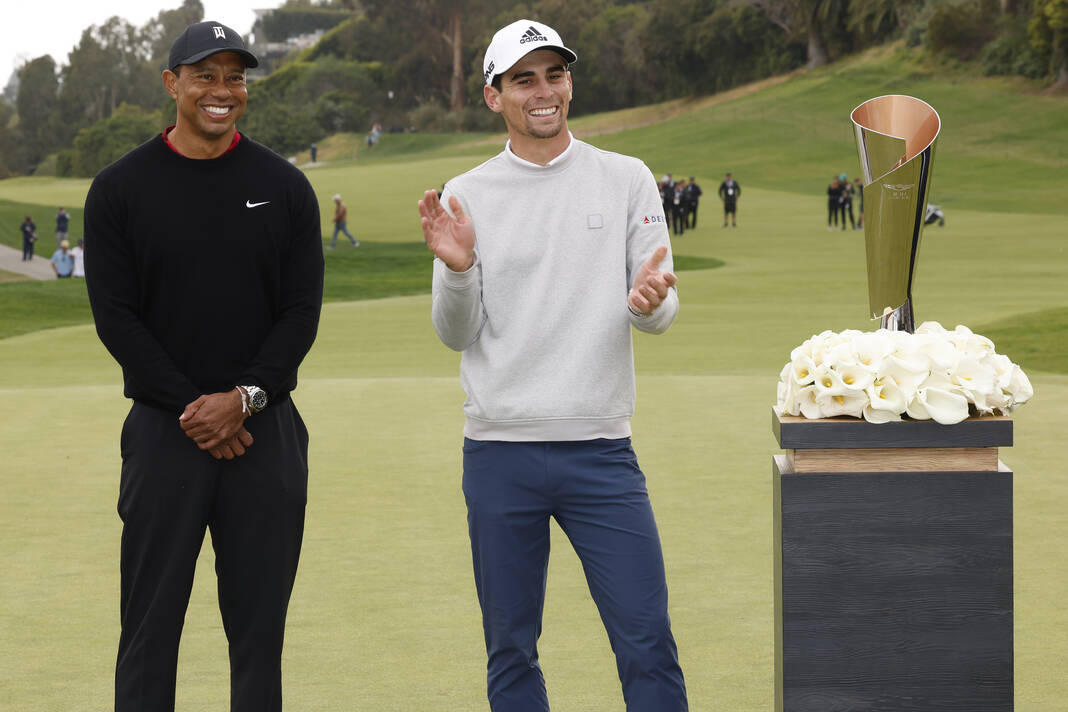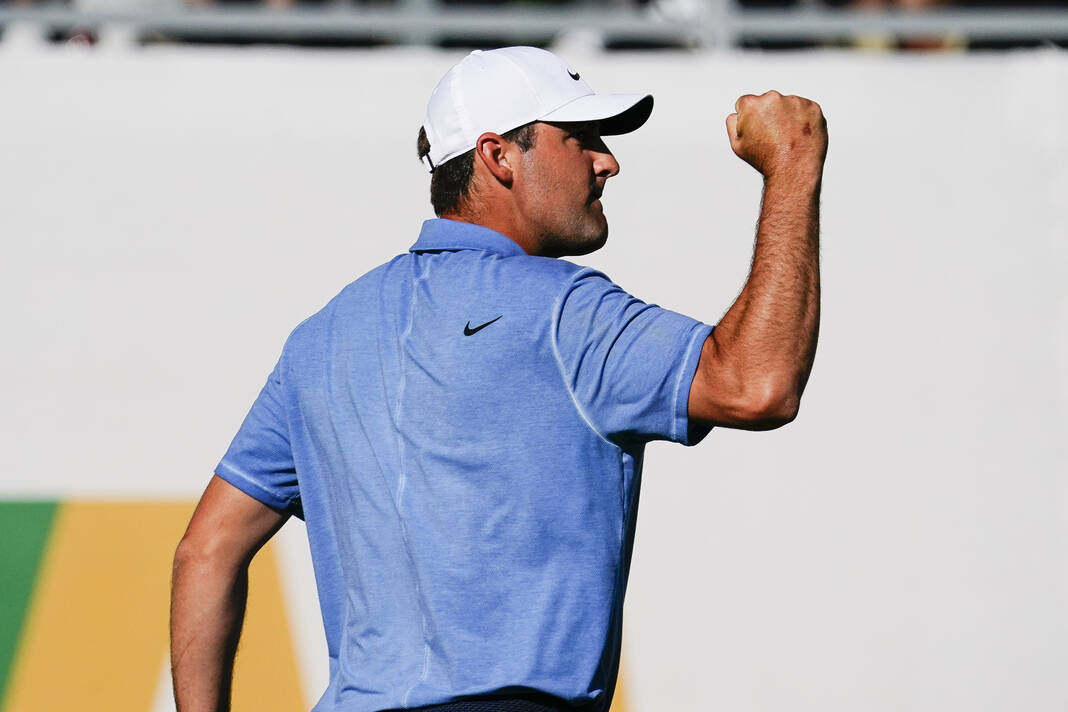


LOS ANGELES (AP) — Tiger Woods is back among the modern stars in the game, this time with his golf clubs, still wearing more than one hat.
He is a player at the Genesis Invitational. It already has the strongest field of the year, but Woods brings a buzz that only he can generate. Never mind that he has never won at Riviera even when Woods was at the zenith of his game.
When he plays, everyone watches.
Woods also is the tournament host who hands out the trophy. For so many players who grew up idolizing him — which is practically all of them — it can make winning feel even greater than the $3.6 million payoff. “Tiger Woods is handing us a trophy — that’s a pretty crazy thought,” Max Homa said when he won two years ago.
Equally important is the voice Woods brings to the private meetings, like the one scheduled for Tuesday afternoon at Riviera, as the leading players try to map out the best way forward for the PGA Tour amid the Saudi-funded threat of LIV Golf.
Woods last showed up at an “actual PGA Tour event” — his words when he announced on Twitter he was playing at Riviera — last August in Delaware. He flew up to lead the first such meeting when the main objective was to bring golf’s best together more often. The next step is deciding how elite these tournaments should be, not just prize money but how many players get to compete.
If he speaks from experience — and no one can like Woods — he would do well to mention a few names that illustrate what makes golf the ultimate meritocracy.
Bob May.
He was the journeyman from California who challenged Woods like no one else could in the summer of 2000. May was leading the PGA Championship by one shot with two to play until Woods birdied the last two holes and beat him in a three-hole playoff. Woods said then it was “probably one of the greatest duels I’ve ever had in my life.”
Grant Waite.
The Kiwi with one PGA Tour victory and a world ranking of No. 242 matched Woods shot for shot on the back nine in the 2000 Canadian Open. Waite trailed by one when he hit 5-iron to 40 feet for an eagle attempt on Glen Abbey’s par-5 closing hole. That forced Woods to play boldly, and he did. In one of the more famous shots of a career filled with them, Woods hit 6-iron from 218 yards out of a fairway bunker, over the water and right at the flag to set up a two-putt birdie and another win.
Rocco Mediate.
He had to go through 36-hole qualifying just to get to Torrey Pines for the 2008 U.S. Open. A five-time winner, Mediate was 45 and ranked No. 157 in the world. And then he pushed Woods to the limits, rallying from two behind in the final round to force a playoff. Mediate dressed in black pants and a red shirt — no one else is that audacious — and Woods had to go 19 holes to beat him.
There were plenty of other occasions where Woods battled the best — Ernie Els at Kapalua and Disney (yes, Disney), Phil Mickelson at Doral and Bay Hill, Vijay Singh at The Players Championship, David Duval at the Masters.
Those were the best.
But it was the rest who provided theater just as great, all because they had a tee time. That’s all anyone needs. And even as the PGA Tour works toward an elite league, it would do well to remember that.
Having a 36-hole cut is imperative, no matter the size of the field. Otherwise, it becomes nothing more than a World Golf Championship series that grew stale. Even the best have to prove themselves every week. That’s what sets golf apart.
No matter the size of the field for the elevated events in 2024 and beyond — 70 seems like a base number, and it could go higher — there has to be room for players to earn a shot at the best.
Look what’s happened just two months into a dynamic year.
Jon Rahm won The American Express after a great battle on the back nine in the California desert with PGA Tour rookie Davis Thompson. A week later, Sam Ryder was on the verge of a wire-to-wire victory until the rough ate up his tee shot on the 15th and Homa delivered a brilliant birdie ahead of him to cap off a five-shot rally.
The most recent example was the WM Phoenix Open, where Scottie Scheffler defended his title and returned to No. 1 in the world. He battled over the weekend against Rahm and Xander Schauffele, with Jordan Spieth lurking. The one player who never went away was Nick Taylor, who stayed with him until the final few holes.
It was just three years ago that Taylor faced Mickelson in the final group at Pebble Beach with a one-shot lead as Lefty was going for a sixth title at Pebble. Instead, Taylor put five shots between them at the turn and won going away.
This is nothing new, of course.
Think back to 1913. The U.S. Open was delayed until September to accommodate British stalwarts Harry Vardon and Ted Ray, who were barnstorming across America for a series of golf exhibitions. When they got to Brookline, 20-year-old amateur Francis Ouimet beat them in a playoff in a U.S. Open that put golf on the front pages.
___
AP golf: https://apnews.com/hub/golf and https://twitter.com/AP_Sports

